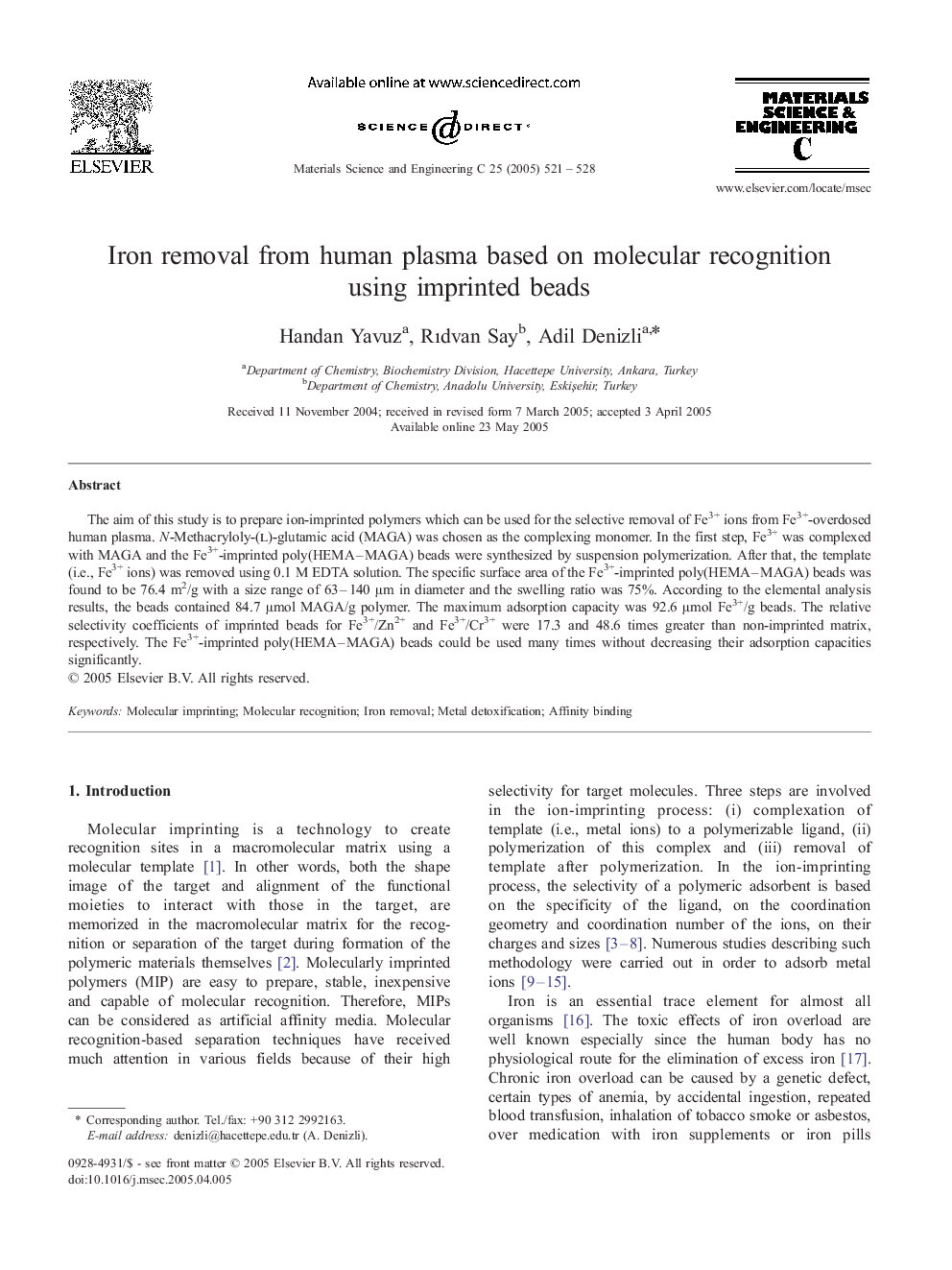| Article ID | Journal | Published Year | Pages | File Type |
|---|---|---|---|---|
| 10615072 | Materials Science and Engineering: C | 2005 | 8 Pages |
Abstract
The aim of this study is to prepare ion-imprinted polymers which can be used for the selective removal of Fe3+ ions from Fe3+-overdosed human plasma. N-Methacryloly-(l)-glutamic acid (MAGA) was chosen as the complexing monomer. In the first step, Fe3+ was complexed with MAGA and the Fe3+-imprinted poly(HEMA-MAGA) beads were synthesized by suspension polymerization. After that, the template (i.e., Fe3+ ions) was removed using 0.1 M EDTA solution. The specific surface area of the Fe3+-imprinted poly(HEMA-MAGA) beads was found to be 76.4 m2/g with a size range of 63-140 μm in diameter and the swelling ratio was 75%. According to the elemental analysis results, the beads contained 84.7 μmol MAGA/g polymer. The maximum adsorption capacity was 92.6 μmol Fe3+/g beads. The relative selectivity coefficients of imprinted beads for Fe3+/Zn2+ and Fe3+/Cr3+ were 17.3 and 48.6 times greater than non-imprinted matrix, respectively. The Fe3+-imprinted poly(HEMA-MAGA) beads could be used many times without decreasing their adsorption capacities significantly.
Related Topics
Physical Sciences and Engineering
Materials Science
Biomaterials
Authors
Handan Yavuz, Rıdvan Say, Adil Denizli,
